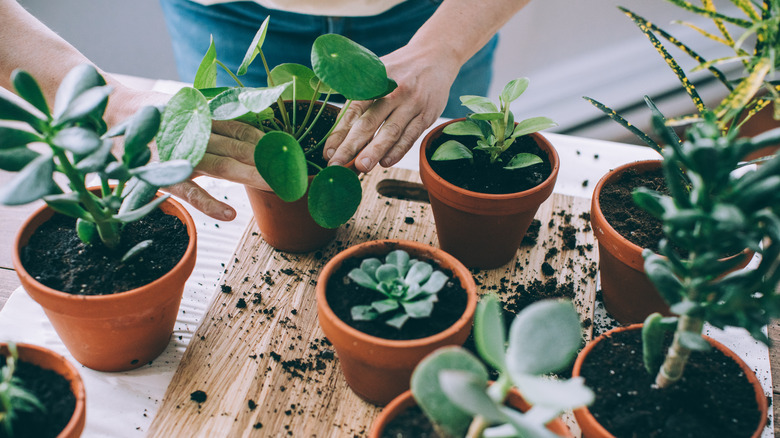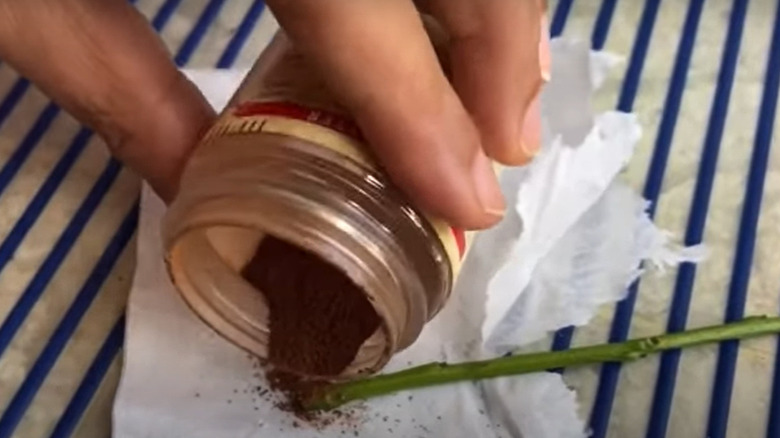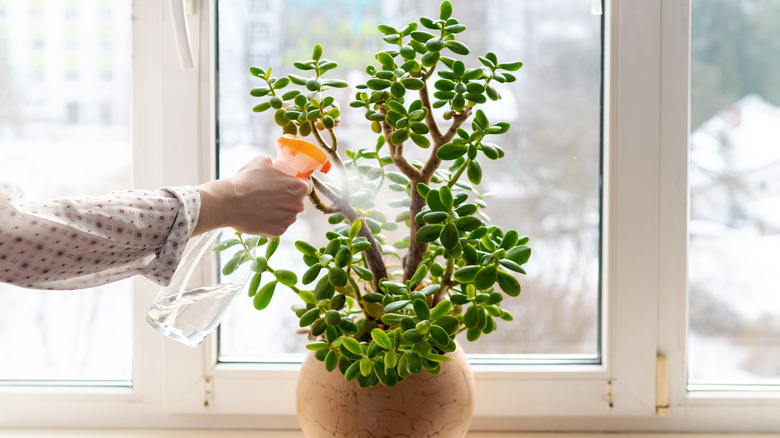The Crucial Step You May Be Skipping When You Add Cinnamon To Your Succulents
If you love to grow succulents you probably know the joys of propagating them. If you're new to keeping succulents, propagation is the process of taking cuttings from established plants and 'rooting' them to make new ones. Succulents are incredibly easy to propagate via stem or leaf directly in the soil, but some people believe that cinnamon can be used as a rooting hormone to help cuttings grow strong and healthy roots more quickly. However, cinnamon does not contain any rooting hormones, so it can't actually cause root growth — but its antimicrobial nature will help to protect the open wound of a cutting. Still, if you're adding cinnamon to your cuttings, you may be skipping one important step.
As cuttings don't yet have any roots to draw moisture from the soil, and because plants lose water from their leaves, cuttings tend to be more vulnerable to drying out quickly. Therefore, it's imperative that cuttings are kept moist while the roots grow. This can be difficult to achieve when propagating succulents in soil, as soil dries out quickly too. A clever gardening hack involves wrapping tissue paper around the cutting where the roots will grow from. This helps retain moisture where it's needed most. Here's how you can do this when adding cinnamon to succulent cuttings during propagation, plus some other ways cinnamon can help keep succulent plants happy and healthy.
How to add cinnamon to your succulent cuttings correctly
If you're propagating a succulent cutting, this is how you can use cinnamon to protect the open wound. Depending on the type of succulent, a cutting may be part of the stem or an individual leaf. Most of the time propagation is as simple as laying a thick succulent leaf on top of a bed of soil that is kept moist until a new baby succulent starts to grow from it. If you are propagating a stem cutting, however, you may have to actually stick a stem with a few leaves growing from it — like upright sedums or stacked crassulas — into the soil so that the roots can grow from the stem. With this type, it's easier to use the tissue method to help retain moisture until the roots grow.
Simply dip the stem with the freshly cut open wound into your cinnamon powder. Ceylon cinnamon is the best type to use as it is slightly milder than other varieties. Then wrap the end in tissue before planting it in the soil, burying the tissue along with it. When you water the soil the absorbent tissue will soak up moisture and remain close to the root, even if the soil around it begins to dry out. The plant can take water from the tissue when it needs it, and eventually, as the roots and plant grow, the tissue will naturally biodegrade into the soil.
How can cinnamon benefit succulents?
As well as the cinnamaldehyde — an antioxidant compound found in cinnamon that protects vulnerable cuttings and seedlings from soil-born funguses that often lead to them 'damping off', which means getting infected, flopping over, and dying — cinnamon can also be used to improve the health of established succulent plants. It is an effective DIY pest repellent as many pests hate the smell of cinnamon, but more importantly, in higher doses, it prevents pests from laying eggs. Cinnamon can also provide natural nourishment for the soil that your succulents grow in so that your plants can benefit from the added nutrients.
You can apply cinnamon to your plants in a few different ways. First, you can make cinnamon soup to water your plants with. To do this, just steep cinnamon powder or small pieces of cinnamon bark in boiling water to extract the desirable properties. Once cool, it can be poured onto soil, but be careful to avoid leaves as they could be burnt if the concentration is a bit too high. You can also use the same cinnamon solution as a weaker concentration in a spray bottle for overall plant health and to keep pests at bay. Finally, you can sprinkle cinnamon powder in a thin layer directly to the top of your soil as a preventative for disease, or use cinnamon bark as a mulch around your plants to help the soil retain moisture and allow the beneficial properties to seep down into it.


